This article appears in The Green List: Australia’s Top 100 Green Energy Players, out on Friday.
Australia’s electric vehicle market has been supercharging ahead in the past 12 months, to the point where an EV, the Tesla Model Y, was our top-selling passenger vehicle in June, and second-bestselling overall, beaten only by the evergreen Toyota HiLux ute.
Sales are on the rise as Australians are inundated with more and more choices. Electric vehicles now come in all shapes, sizes and at different prices, which means there’s one to suit just about anyone looking for a new car. Here’s your guide to what’s available, whether you’re after an affordable city runabout, a family friendly SUV or a fully zapped performance car.
HYUNDAI IONIQ 5 N
Price: $111,000
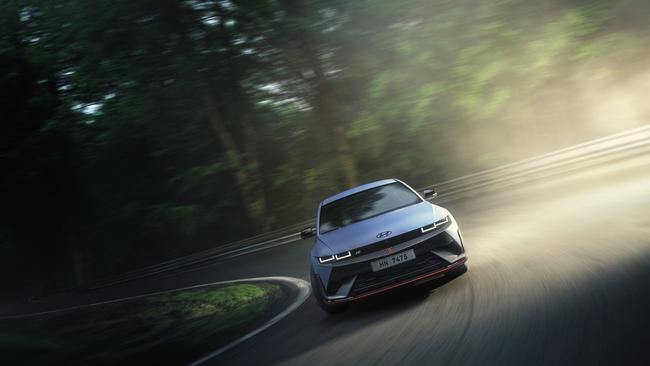
Electric cars started out as glorified golf buggies but have evolved into a plethora of practical and stylish options. Now the next stage of said evolution is here: the performance electric car. Not just fast, because most EVs accelerate quickly, but engaging and fun for the driver. The Hyundai Ioniq 5 N takes the brand’s funky SUV and gives it a makeover to make it racetrack ready or, as Hyundai likes to call it, a corner rascal. It’s got plenty of power, packing a 448kW/740Nm dual-motor set-up, but that’s only the beginning. Hyundai takes things to the next level with a raft of specially designed features, including a groundbreaking virtual gearbox, a synthesised sound system and a “Drift Mode” – to name just a few intriguing features. Hyundai claims the Ioniq 5 N can run 0-100km/h in just 3.4 seconds and has a top speed of 258km/h. Pricing and exact specifications for this new take on the EV will be revealed closer to its arrival in Australian showrooms by the end of this year.
PORSCHE TAYCAN
Price: from $165,700
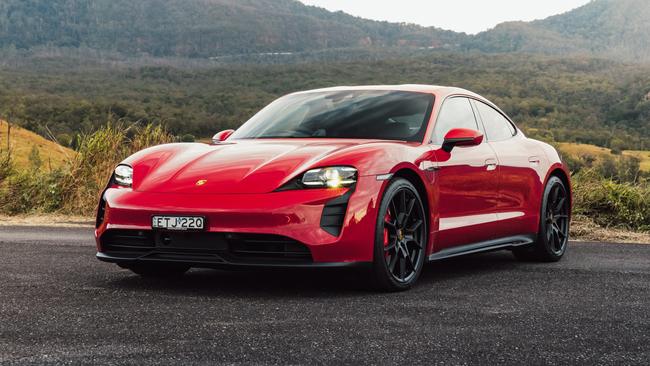
While the Hyundai Ioniq 5 N is a twist on the idea of a hot hatch, the Porsche Taycan combines elements of a sports car and a luxury sedan to create one of the most remarkable EVs to date. Porsche has created an array of Taycans, from the Taycan RWD (from $165,700) all the way to the wild Taycan Turbo S (from $365,100), which cater to a wide audience. While they’re all enjoyable in their own way, the one that stands out is the Taycan GTS. It’s not the most powerful or the fastest, but it is the one designed for maximum driving pleasure. The dual motors produce 380kW (440kW on Overboost) and 850Nm but it’s the chassis, with specially tuned suspension and fantastic braking system, that makes it such a joy for the person behind the wheel. It’s still early days, but the Taycan GTS has set the benchmark for EV-driving engagement, the one against which all future models will be measured. Of course, if you’re more interested in ludicrous acceleration, the Taycan Turbo S is for you. With 560kW and 1050Nm, it will launch from 0-100km/h in 2.8 seconds – which is enough to literally make you nauseous if you do it a few times in succession. In other words, the Porsche Taycan Turbo S is truly, sickeningly fast.
TESLA MODEL Y
Price: from $65,400

The Tesla Model Y isn’t just Australia’s favourite electric vehicle, it’s one of the bestselling cars in the country, full stop. In June of this year, the only vehicle Australians bought more of was the Toyota HiLux, which is a remarkable achievement given the previously slow uptake of EVs in the local market. However, the combination of the American brand’s technology and its growing reputation has clearly clicked with Australian customers. Despite its popularity (or perhaps because of it) Tesla recently slashed the price of the Model Y, cutting up to $7455 off the ask. The range now begins at $65,400 for the base grade, rear-wheel-drive option and runs through $78,400 for the Long Range and $91,400 for the Performance variant. Those three offer respectable driving range, with 455km (RWD), 533km (Long Range) and 514 kilometres (Performance). The price cut also allows the entry-level and Long Range variants to squeeze in under luxury car tax threshold, which should only help maintain its popularity.
500 FIAT E
Price: $52,500
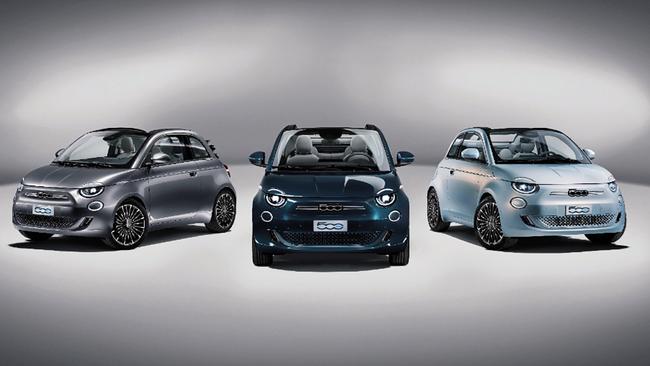
Patience is a virtue, especially if you want a cute, stylish and compact electric car. That’s because the Fiat 500e was first revealed way back in March 2020 but finally hits Australian roads in these last months of 2023. For those who love the Italian city car, the wait should be worth it, as the 500e retains the same retro looks of the previous petrol-powered generation of Fiat 500s while adding an all-new electric powertrain. The initial electric model Fiat is offering locally is the La Prima (Italian for “The First”) which will have a 311km range and an 87kW electric motor driving the front wheels. It won’t come cheap, though, with this European head-turner offering a high level of standard equipment that pushes the asking price to $52,500. If you want something similar but sportier, the Abarth 500e Turismo will arrive soon after the standard model hits Australian showrooms. It gets a punchier 114kW electric motor, 18-inch alloy wheels and a “sound generator” that can replicate the throatiness of the old petrol-powered Abarth’s turbocharged engine.
-
BYD ATTO 3
Price: $48,011
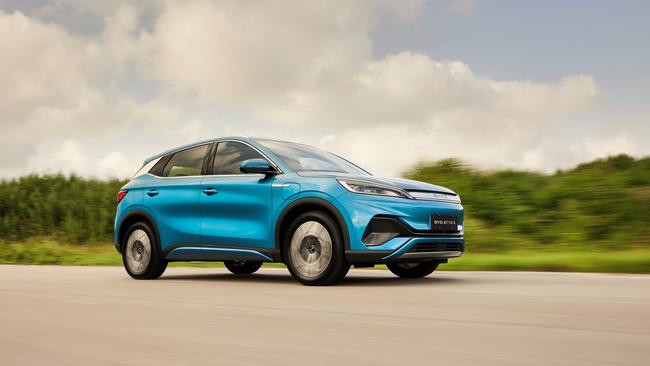
You might never have heard of BYD – and a couple of years ago almost no one in Australia had – but seemingly overnight the Chinese brand is now one of the biggest players in our EV market. BYD, which stands, rather grandly, for Build Your Dreams, recently overtook Tesla to become the world’s biggest EV brand, with a huge market in its home country and external investment from Warren Buffett’s Berkshire Hathaway. Now it has its sights set on global expansion and Australia is key to the plan. The Atto 3, a compact SUV, is already the third bestselling EV model locally behind the Tesla duo of Model Y and Model 3. It’s not hard to understand why, with the Atto 3 range beginning at a relatively affordable price of $48,011, while offering space for a small family and 345 kilometres of driving range on a single charge. BYD has plans for expansion in Australia, beginning shortly with the Dolphin. This small hatch will be the cheapest EV sold here, starting at just $38,890, undercutting closest rival the MG4 by just $100.
-
GWM ORA
Price: $39,990
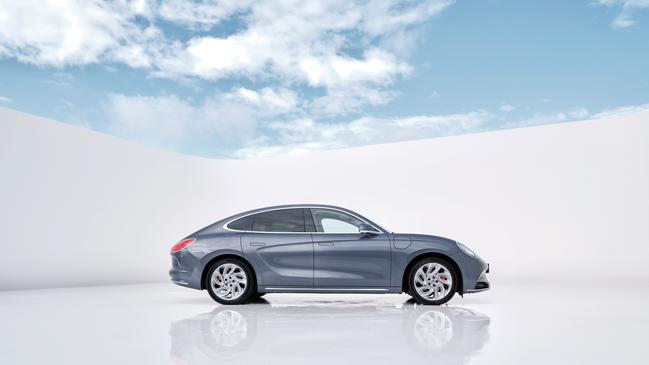
The battle at the bottom end of the EV market is heating up. Not only are the MG4 and BYD Dolphin duking it out to see how low they can go, but another Chinese brand is getting in on the action. At just $1000 more than the MG4 and $1100 more than the Dolphin, the $39,990 GWM Ora is the latest entry into the relatively affordable EV contest. For that price you get the Ora Standard Range, with its 126kW electric motor and a 48kWh battery providing a 310km distance between recharges. If that’s not far enough and you’re willing to spend $45,990, you can have the Ora Extended Range. It has the same motor but a 63kWh battery which, as the name implies, extends the range to 420 kilometres.
-
MG4 ELECTRIC
Price: $38,990
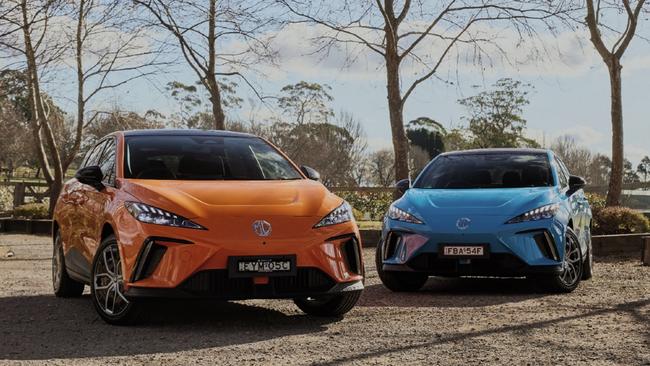
The former British brand (it’s now part of Chinese conglomerate SAIC Motors) has been a major player in the evolving EV market in Australia and is doing the vital work of pushing prices down. First came its sub-$50,000 ZS EV SUV, but now it has introduced one of the most affordable battery-powered cars on the market. The MG4 Excite 51 is priced from just $38,990, which makes it the second cheapest EV you can buy, beaten by a mere $100 by the incoming BYD Dolphin. The Toyota Corolla-sized MG4 is a practical small car that will have appeal to anyone looking for a city runabout. It is powered by a 125kW electric motor that’s mounted in the back of the car, making it the only rear-wheel-drive hatchback on the market. It has a 51kWh battery that provides approximately 350 kilometres of driving range. In a sign of things to come, the MG line-up extends beyond the Excite 51 to include other models with bigger batteries that provide more range but cost more money. There’s a 64kWh battery version that starts at $44,990 and a range-topping Essence Long Range 77 (with a 77kWh battery) from $57,990.
-
AUDI Q8 E-TRON
Price: from $153,900
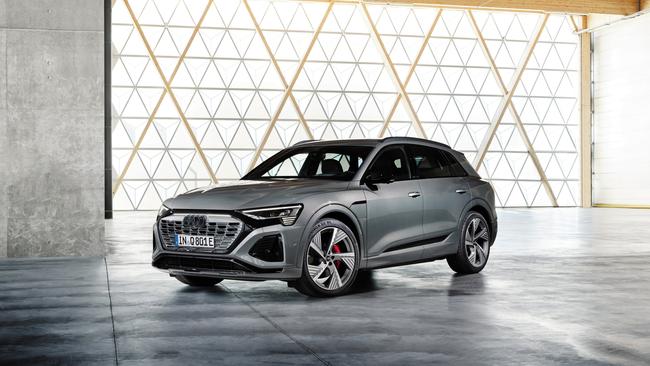
The right name for a new model is important, it helps establish expectations and identity for a car. Which is why Audi chose to call its first all-electric model simply the e-tron, just like its first four-wheel-drive car was known as the quattro. However, with more electric models now arriving in showrooms – the e-tron GT, Q4 e-tron and soon, the Q6 e-tron – Audi needed a new name for its headlining battery-powered model. So, with a mid-life makeover, the e-tron becomes the Q8 e-tron, integrating into an expanding line-up that wears the Q8 badge. This will include the high-performance, petrol-powered SQ8 and a plug-in hybrid model, as Audi tries to grow the appeal of its new range-topping SUV. The former e-tron S becomes the SQ8 e-tron and Audi will also continue to offer its traditional five-door wagon and swooping-roofed Sportback body styles with the new name. It’s not just a new name, of course, as there are some notable hardware upgrades, starting with the battery. The e-tron’s 71kWh unit is replaced by a 95kWh version for the Q8 e-tron, while the newly named SQ8 e-tron is the more potent model and gets a new nickel-cobalt-aluminium battery with 114kWh. Range varies across powertrains and body shapes but the longest claim belongs to the Q8 e-tron Sportback, which promises 600 kilometres of driving between visits to a charging station.
-
BMW iX
Price: from $133,900
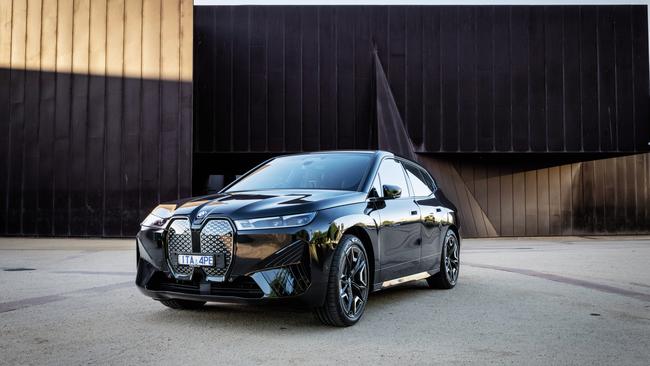
Forget what you think you know about BMWs, because the Bavarian brand’s future looks very different from its past. In fact, it will look a lot like this radically futuristic all-new SUV, the iX. This sharp-edged machine is meant to be the model that redefines BMW, retaining the idea of the “ultimate driving machine” but introducing a new era of electrification, technology and design. It starts at the front of the car, where BMW’s traditional kidney grille has been reinterpreted to include what the company calls an “Intelligence Panel” housing the myriad cameras and sensors it needs for this machine to drive itself. Not only that, but BMW claims the panel has “self-healing” properties, specifically a polyurethane coating that allows small scratches to disappear when treated with heat or just left to sit for a day at room temperature.
That’s just a small part of the technology loaded into the iX. BMW has held little back to create a flagship for the brand and its electric future. There are three powertrain options: xDrive40, xDrive50 and M60, which offer 240kW/630Nm, 385kW/765Nm and a whopping 455kW/1100Nm respectively. Prices for this techno tour de force start at $130,900 for the iX xDrive40 and stretch all the way up to $233,400 for the very fast ix M60.
-
MERCEDES-AMG EQS 53 4MATIC+
Price: $328,400
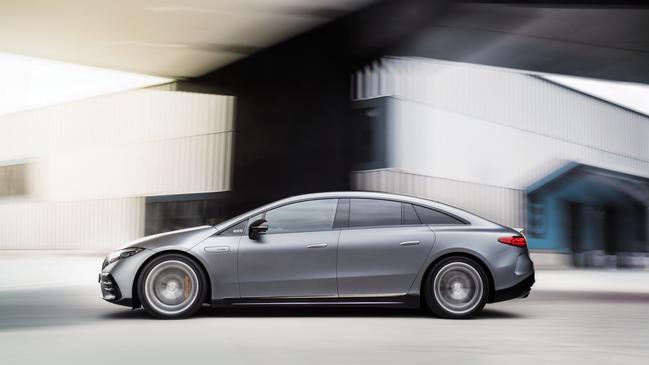
The more things change, the more they stay the same. As the world moves to an electric future dominated by SUVs, Mercedes isn’t giving up on what has defined the brand for more than a century – luxury sedans. That’s why one of the first creations for its new range of EQ-branded EV models was a 21st-century twist on its beloved S-Class limousine. The EQS is a deliberately different take on the S-Class, with an original, aerodynamically-honed shape and a technology-laden interior. While it fulfils the same basic role as the S-Class – carrying four passengers in absolute comfort – the way it goes about it is radically different. Naturally there are electric motors for motivation, with the EQS 450 4Matic making 265kW/800Nm from its dual motors, while the AMG version, the EQS 53+, pushes out 484kW/950Nm in standard form. It is also available with a Dynamic Plus package that pumps that up to a wild 560kW/1020Nm. Inside, the smaller electric motors and flat, underfloor battery pack combine to deliver an incredibly spacious cabin. And, if you really want to embrace this modern technology-driven world you can tick the box for the massive digital display, unironically dubbed the Hyperscreen, which integrates three separate screens into one huge display unit.
The EQS really is a major departure for the brand in terms of both the way it looks and the way it drives, and yet despite this it somehow manages to remain unmistakably Mercedes-Benz.
-
Polestar 2
Price: from $67,400
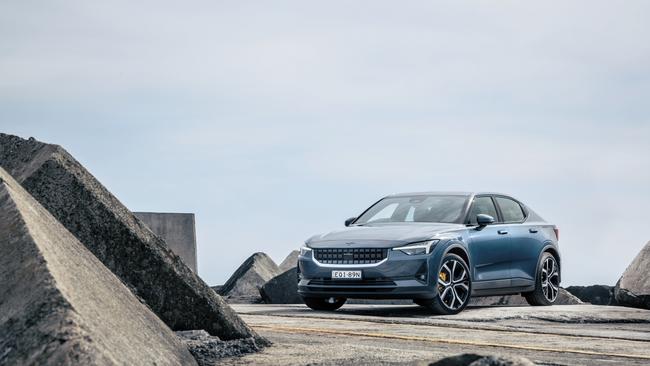
No brand quite sums up the state of the modern automotive industry like Polestar. It began life as a Swedish racing team, became Volvo’s official performance-car division and then, when Chinese automotive conglomerate Geely took control of Volvo, it turned Polestar into an all-electric, standalone car maker. While there is still a lot of shared mechanical DNA between Polestar and Volvo, there’s also a clear difference between the two marques. Polestar retains its sporty bias and its creation was designed to tackle market giant Tesla head-on. The Polestar 2 is the high-riding sedan the company hopes will steal sales from both the Tesla Model 3 and Model Y with its subtle Scandinavian design. It obviously isn’t working quite as well as management had hoped, because there are some major changes coming for 2024: the entry-level model switches from a single front motor to a rear one, and gets more performance, up to 220kW/490Nm from 165kW/330Nm. There are also dual-motor variants that get a power boost, to 310kW/740Nm (up from 300kW/660Nm) for the regular model and 350kW for the Performance Pack option. The lithium-ion battery technology has also been improved for a longer driving range. Prices have gone up to compensate for the changes, with Polestars now starting at $67,400 for the single-motor and $76,400 for the dual-motor models.
-
FORD MUSTANG MACH-E
Price: from $79,990
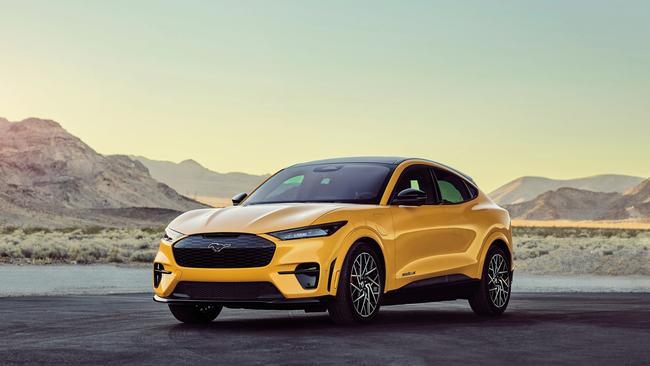
Ford knew it needed to do something special to compete with the popularity of Tesla in the EV market, so it decided to turn its most famous model electric. But the Mustang Mach-E is not your father’s Mustang. While the original ’Stang was designed to be a fun, desirable car for a post-war America, this new take on the “Pony Car” is aimed at a modern market that prefers SUVs. That makes the Mustang Mach-E a direct rival to the Model Y, which will be a tough fight for Ford, but as sales of the Tesla demonstrate, it’s the type of EV buyers are after. In Australia there will be three Mach-E variants available: Select, Premium and GT. Select will have a 198kW/430Nm single-motor powertrain capable of 470 kilometres of driving on a single charge. Stepping up to Premium means a single-motor making 216kW/430Nm and a 600 kilometres range, while the GT gets a dual-motor powertrain for 358kW/860Nm of performance punch, but the range drops to 490 kilometres. The Mustang Mach-E won’t arrive in Australia before the end of the year but Ford has already confirmed costings, with the Select priced from $79,990, the Premium from $91,665 and the GT starting at $107,665.
-
KIA EV6
Price: from $72,590
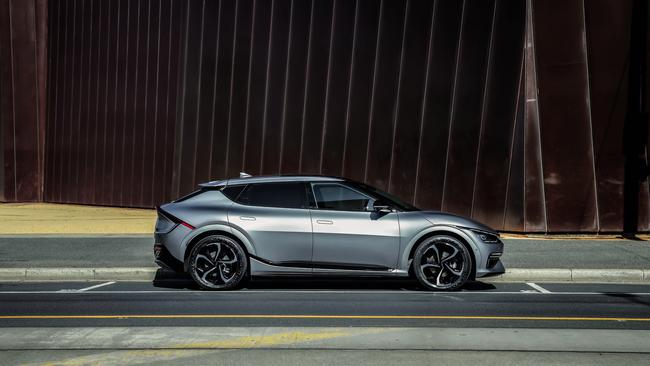
While it hasn’t been a sales hit like the Tesla Model Y (due in part to supply issues), Kia’s mid-size electric SUV is well worth consideration for anyone looking to either make the switch to their first EV or shopping around for a bigger one. The EV6 showcases the advantages of car makers designing bespoke EV platforms for their new models, because while it has the same external dimensions as a mid-size SUV, inside it has the room of a large one. It’s built on the “E-GMP” architecture developed by Kia and Hyundai, which is both loaded with the latest technology and also highly modular. That means it can be scaled to suit a variety of models in the coming years. The EV6 is available in a variety of forms, from the entry-level, single-motor Air at $72,590 (plus on-road costs) all the way up to the high-performance dual-motor GT, which costs $99,950 (making it Kia’s most expensive model in Australia) and accelerates like a proper rocket. Even with the entry-level Air rear-wheel drive model you get an electric motor capable of 168kW/350Nm and the longest driving range of the entire line-up, at 528 kilometres. But if you spring for the range-topping GT you’ll be rewarded with the most powerful Kia ever built, a 430kW/740Nm silent beast that can haul the whole family, and possibly frighten them all at once.
-
ROLLS-ROYCE SPECTRE
Price: from $770,000
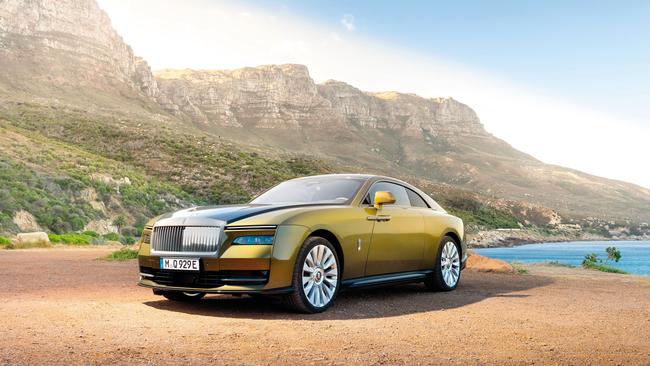
If there is a car company that should embrace the electric age more than any other it’s Rolls-Royce. Why? Because Rolls-Royce has always been about effortless, serene performance, luxury, and has never really fussed over engine size. And what’s more effortless than the instant torque and silent running of electric motors? The Spectre will be the marque’s first production electric car and it has all the elements you’d expect from the British brand. It’s a two-door coupe that’s longer than a Toyota LandCruiser, weighs nearly three tonnes (2890 kilograms) and is suitably quick (it can run 0-100km/h in just 4.5 seconds, despite its vast size). That’s thanks to two electric motors that make a combined 430kW and 900Nm, drawing power from a 102kWh battery pack (which makes up 700 kilograms of its total weight). Rolls-Royce claims a driving range of up to 520 kilometres, which should be plenty for your chauffeur to get you to and from the office during the week. While it’s radically different under the surface, everything else about the Spectre is pure Rolls-Royce. The cabin is a study in opulence, silence and attention to detail, including the Starlight Headliner, which uses fibre-optic cables woven into the roof and doors to create the impression that you’re under the stars at night. Of course, this level of luxury, performance and status doesn’t come cheap. The Spectre starts at $770,000 and that doesn’t include any (inevitable) customisation or on-road costs (a $1 million price tag isn’t out of the question), making the Spectre the most expensive EV on the planet.

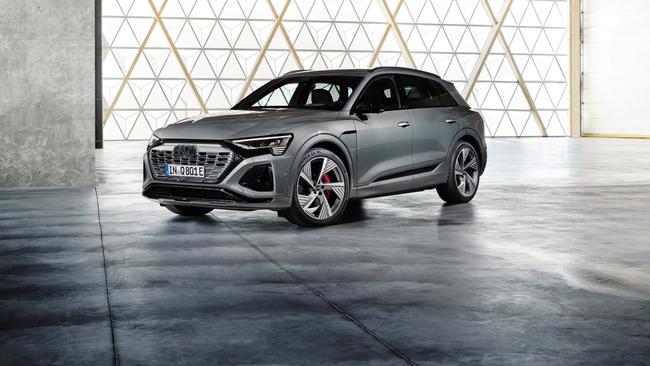
More Coverage
Add your comment to this story
To join the conversation, please log in. Don't have an account? Register
Join the conversation, you are commenting as Logout